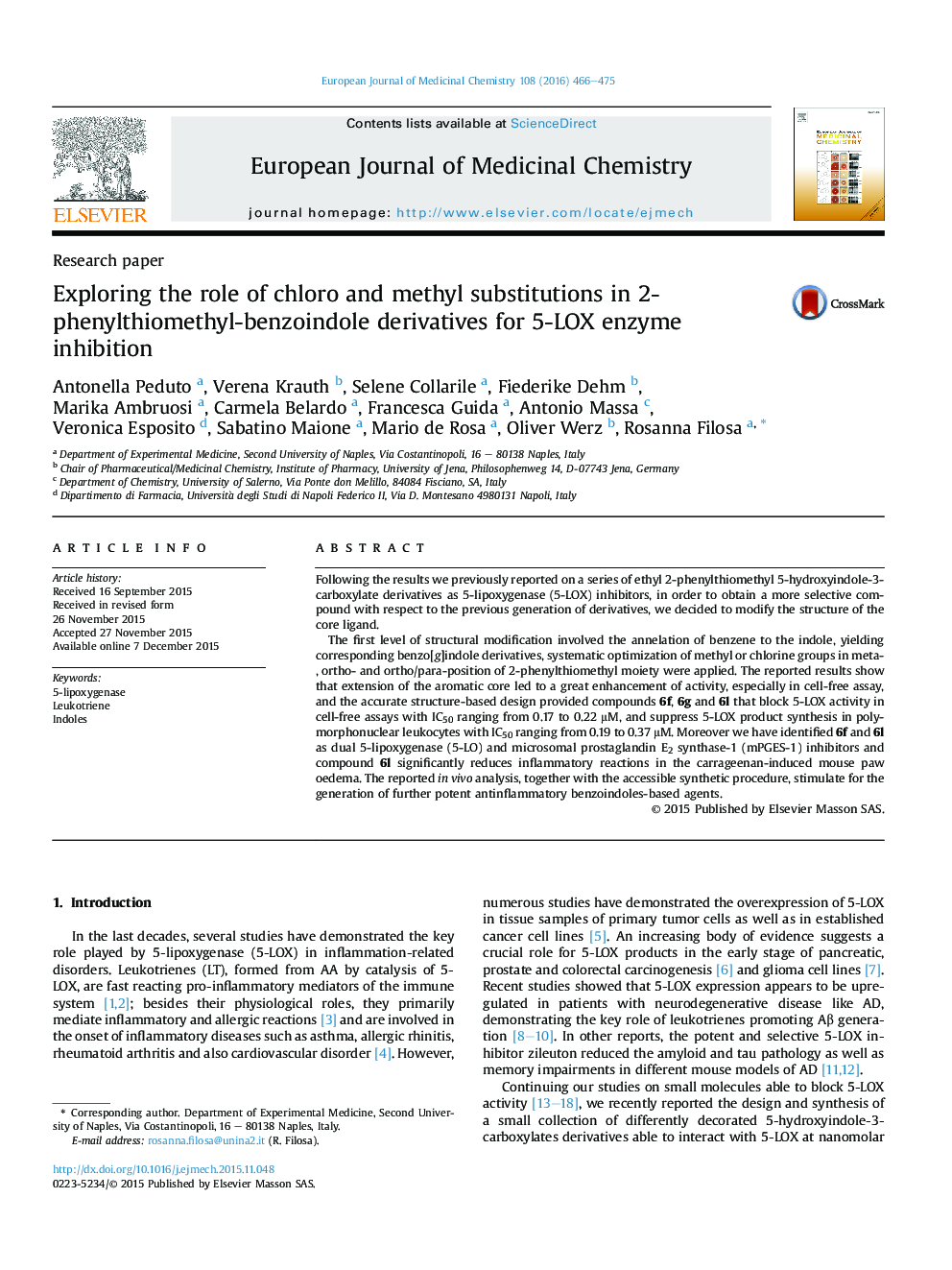| Article ID | Journal | Published Year | Pages | File Type |
|---|---|---|---|---|
| 1393867 | European Journal of Medicinal Chemistry | 2016 | 10 Pages |
•Molecular modification and optimization process of benzoindoles based agents were applied.•Compounds 6f and 6l exhibited dual 5-lipoxygenase and microsomal prostaglandin E2 synthase-1 inhibition.•Compound 6l caused a reduction of oedema of 77.4%.
Following the results we previously reported on a series of ethyl 2-phenylthiomethyl 5-hydroxyindole-3-carboxylate derivatives as 5-lipoxygenase (5-LOX) inhibitors, in order to obtain a more selective compound with respect to the previous generation of derivatives, we decided to modify the structure of the core ligand.The first level of structural modification involved the annelation of benzene to the indole, yielding corresponding benzo[g]indole derivatives, systematic optimization of methyl or chlorine groups in meta-, ortho- and ortho/para-position of 2-phenylthiomethyl moiety were applied. The reported results show that extension of the aromatic core led to a great enhancement of activity, especially in cell-free assay, and the accurate structure-based design provided compounds 6f, 6g and 6l that block 5-LOX activity in cell-free assays with IC50 ranging from 0.17 to 0.22 μM, and suppress 5-LOX product synthesis in polymorphonuclear leukocytes with IC50 ranging from 0.19 to 0.37 μM. Moreover we have identified 6f and 6l as dual 5-lipoxygenase (5-LO) and microsomal prostaglandin E2 synthase-1 (mPGES-1) inhibitors and compound 6l significantly reduces inflammatory reactions in the carrageenan-induced mouse paw oedema. The reported in vivo analysis, together with the accessible synthetic procedure, stimulate for the generation of further potent antinflammatory benzoindoles-based agents.
Graphical abstractFigure optionsDownload full-size imageDownload as PowerPoint slide
